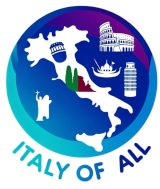The province of Foggia, located in the Apulia region of southern Italy, is an expansive and diverse area known for its vast agricultural plains, ancient forested areas, and a rugged coastline. Often referred to as the “granary of Italy,” Foggia is central to the agricultural output of the region, particularly in the production of wheat, olives, and grapes.
Geographically, the province includes the northern part of the Apulian peninsula and extends to the Gargano promontory, which is noted for its scenic beauty and biodiversity. The Gargano National Park, a significant attraction, is rich with dense forests, coastal lagoons, and the Tremiti Islands, offering a wide range of outdoor activities like hiking, swimming, and bird watching.
Foggia’s historical significance is underscored by numerous archaeological sites and historical buildings. The area has a rich history, influenced by Byzantine, Norman, and Swabian cultures, which is reflected in the architecture of its towns and villages. Notable sites include the medieval Castel Fiorentino and the Cathedral of Foggia, which combines different architectural styles due to various reconstructions over the centuries.
The cuisine of Foggia is robust and reflects its agrarian traditions. Dishes often feature local produce like tomatoes, olives, and durum wheat, which is used to make pasta. Specialties such as “orecchiette” (ear-shaped pasta), “taralli” (peppery biscuits), and “burrata” (a creamy cheese) are popular both locally and beyond.
Economically, besides its strong agricultural sector, Foggia has developed significant industrial activities, including food processing and manufacturing. The province’s economy also benefits from its fishing industry, particularly in the coastal areas, and a growing tourism sector, driven by its natural attractions and historical sites.
Foggia faces some socio-economic challenges, such as infrastructure development and managing urban and rural economic disparities. However, initiatives aimed at enhancing local tourism and promoting its cultural and natural heritage are key parts of strategies to stimulate economic growth and improve the quality of life for its residents.
Overall, the province of Foggia offers a unique combination of natural beauty, historical depth, and cultural richness, making it an integral part of Italy’s cultural and economic landscape.
Comuni in Foggia Province:
- Anzano di Puglia
- Accadia
- Ascoli Satriano
- Alberona
- Biccari
- Apricena
- Alfano
- Bovino
- Castelnuovo della Daunia
- Cagnano Varano
- Carlantino
- Castelluccio Valmaggiore
- Carpino
- Casalvecchio di Puglia
- Carapelle
- Casalnuovo Monterotaro
- Castelluccio dei Sauri
- Celle di San Vito
- Cerignola
- Deliceto
- Celenza Valfortore
- Faeto
- Chieuti
- Foggia
- Lucera
- Mattinata
- Lesina
- Ischitella
- Manfredonia
- Motta Montecorvino
- Panni
- Orsara di Puglia
- Monteleone di Puglia
- Orta Nova
- Monte Sant’Angelo
- Ordona
- Poggio Imperiale
- Rocchetta Sant’Antonio
- Roseto Valfortore
- Rodi Garganico
- Rignano Garganico
- Peschici
- Pietramontecorvino
- San Paolo di Civitate
- Stornara
- San Severo
- San Ferdinando di Puglia
- Sant’Agata di Puglia
- San Giovanni Rotondo
- San Nicandro Garganico
- San Marco la Catola
- Serracapriola
- San Marco in Lamis
- Stornarella
- Vieste
- Volturara Appula
- Volturino
- Torremaggiore
- Isole Tremiti
- Torricella del Pizzo
- Vico del Gargano
- Zapponeta
